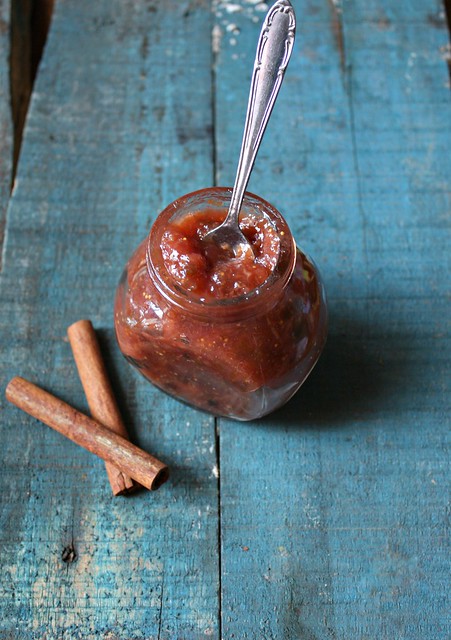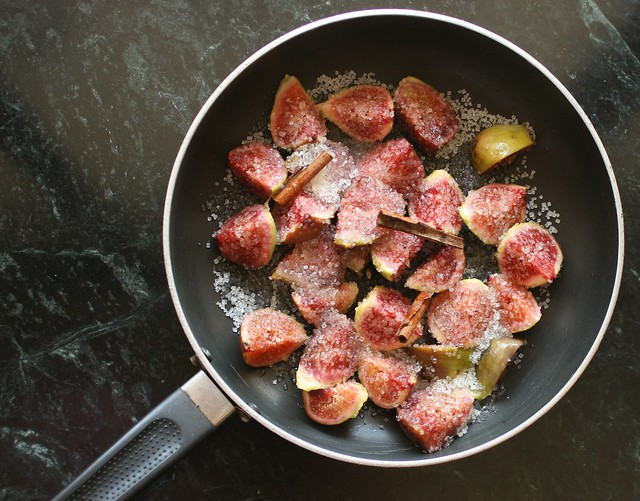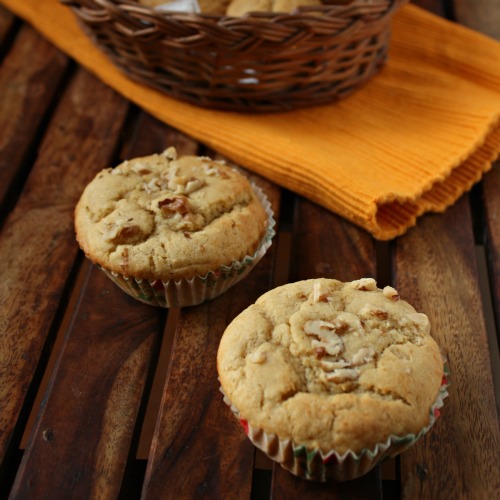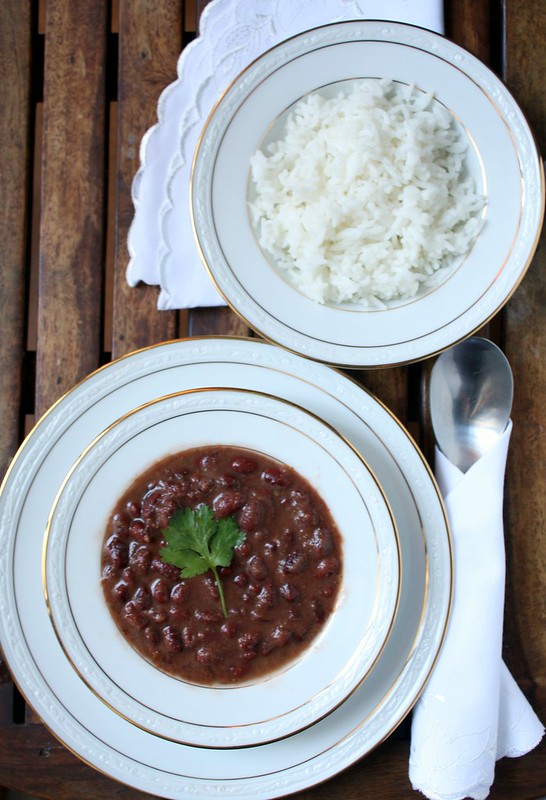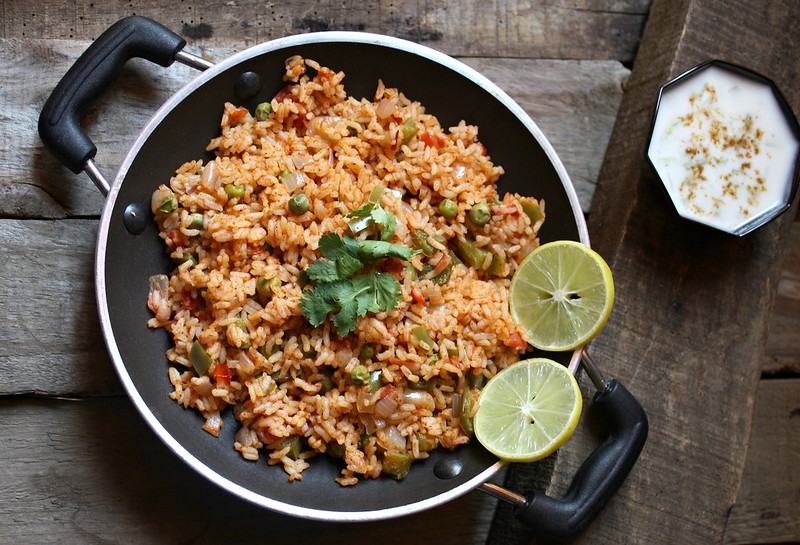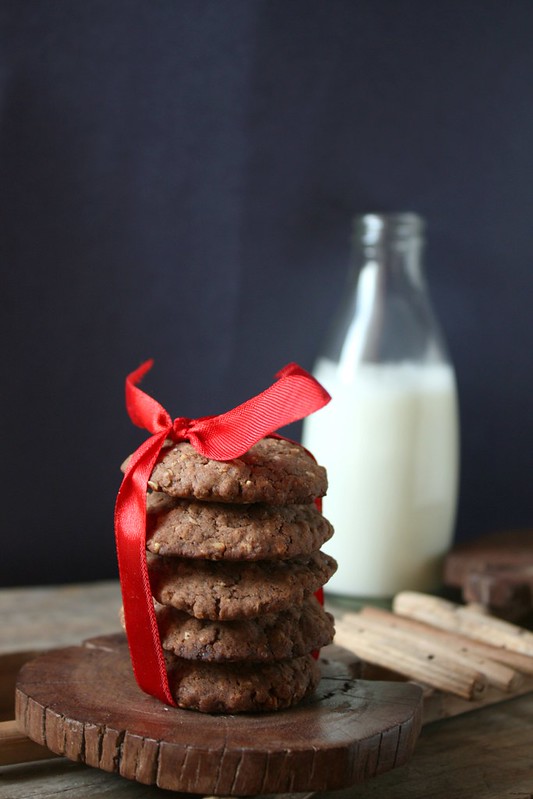Paneer or cottage cheese is something that's been popular in North Indian cuisine, and not an inherent part of South Indian food. But with all the 'North Indian' restaurants opening all over in the cities in the South, it was almost mandatory for a person to order for something with paneer, if you ate out at one of these restaurants. Many years back, when I was younger, I remember some families that stuck to very traditional South Indian food at home, but insisted on something with paneer when they ventured out to eat.
The absolute standard order would be paneer butter masala, which was usually an oily, greasy masala with fried paneer floating in it. I could never get myself to even taste it, but people relished it. The slightly healthier option would be a palak paneer and sometimes, for a change, there would be an order for matar paneer.
Unfortunately North Indian food was always associated with a lot of oil and masalas, but that is not how their home cooked food is. Very few restaurants got it right back then, at least.
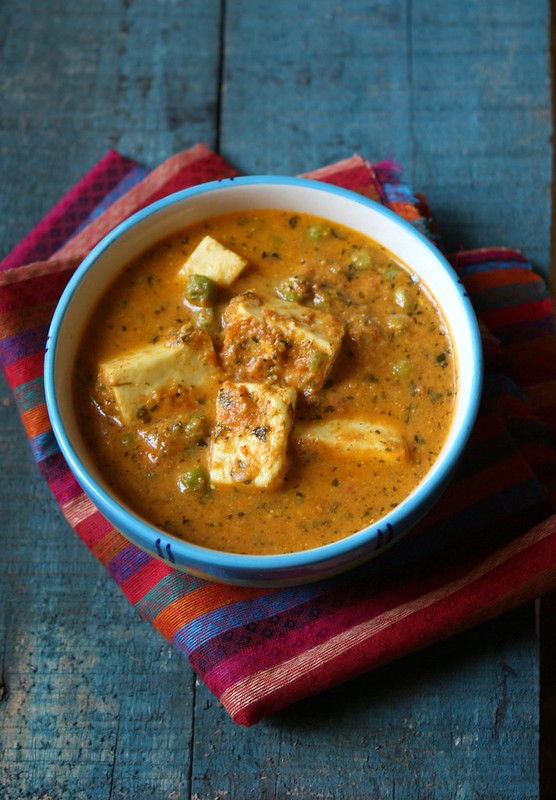
I was not very fond of paneer and it is something I started enjoying only when I had it home-cooked. This matar paneer is one such dish that I quite enjoy. The usual suspects that go into any such dish would be onions, ginger, garlic, tomatoes and some masalas. I decided to do it different this time. Onions are added to give some body to the gravy, but there are communities that don't eat onions for religious reasons and so substitute it with ground cashewnuts. I have used an onion and then added some sunflower seeds instead of the cashewnuts, to cut down on the calories and give it a different taste and texture.
Fresh paneer or home made paneer has a wonderful taste, but if you cant find that, and you only option is frozen paneer, then ensure that you keep the paneer in the 'fridge (not freezer). I keep it in the chiller tray of the regrigerator and it works just fine. Keep it out at least 10 mins to half an hour before you plan to use it. Boil a pan with water that should be enough to cover the paneer and then add a little salt. Once the water starts boiling, drop in the paneer pieces and turn off the heat in about 2 mins. Keep the pan covered till you use the paneer. You could also shallow fry the pieces, but deep frying really kills the taste of paneer completely, so please avoid that
Matar Paneer / Cottage cheese and peas in an aromatic gravy
What you need -
150 gm / 3/4 cup paneer / cottage cheese pieces
1 cup shelled green peas
1 onion (can be omitted)
3 pods garlic (can be omitted)
a small piece of ginger
2-3 green chillies
2 tsps sunflower seeds
2 large tomatoes
1/2 cup curds / yoghurt
1-2 tbsp oil (I used rice bran oil)
1/2 tsp turmeric powder
1 tbsp kasuri methi / dried fenugreek leaves
1 tsp chilli powder
1 tsp jeera powder / cumin seed powder
1/2 tsp sugar
1/2 tsp garam masala
What you do with it -
If you are using frozen paneer, thaw it and cut it in pieces
Heat water with a little salt in a pan and bring it to a boil
Drop the paneer pieces and turn off the flame in about 2 mins
Cover and keep aside
If using frozen peas, keep the peas in a bowl of warm water
If using fresh peas, bring the peas to boil in some water, or you could use the microwave to cook the peas
Peel the skin off the tomatoes and cut into large pieces
Roast the sunflower seeds on a low flame for 2-3 mins. Take care not to make it too brown
Chop the onion into pieces
Grind the onions, garlic, ginger, green chillies and roasted sunflower seeds into a smooth paste
Grind the tomatoes, curds and chilli powder to a paste
In a pan, heat about 1 tbsp oil, add kasuri methi and the ground onion paste
Allow it to turn slightly brown, adding about 1 more tbsp of oil, if required.
Once the raw smell of onions is gone, add the tomato-curd paste
Add turmeric powder, salt and cumin powder
Allow it to simmer for about 5 mins and then add the paneer and peas
Simmer for another 3-4 mins
Add the garam masala and the sugar
Stir once and take it off the heat
Serve hot with jeera rice or hot rotis


